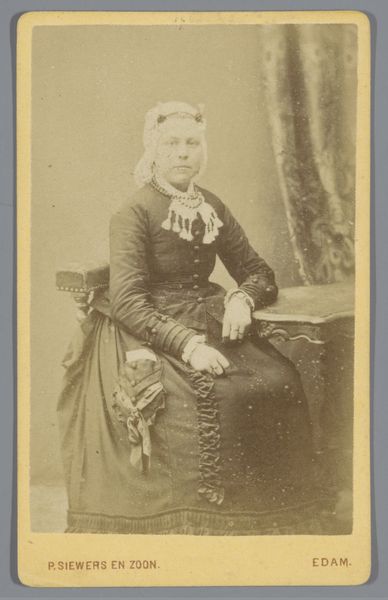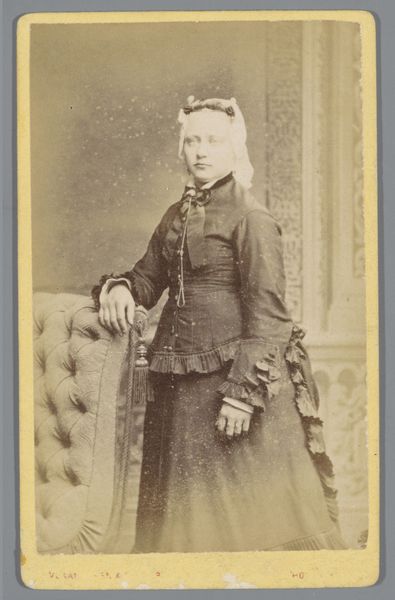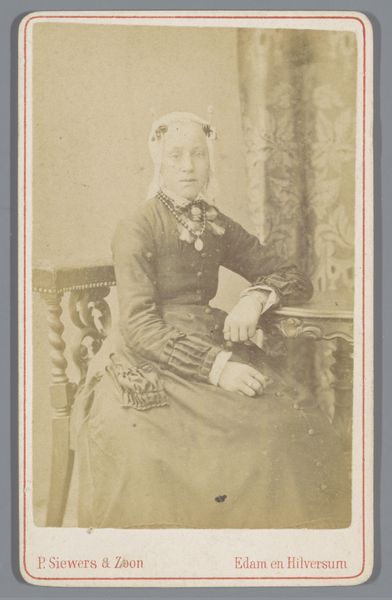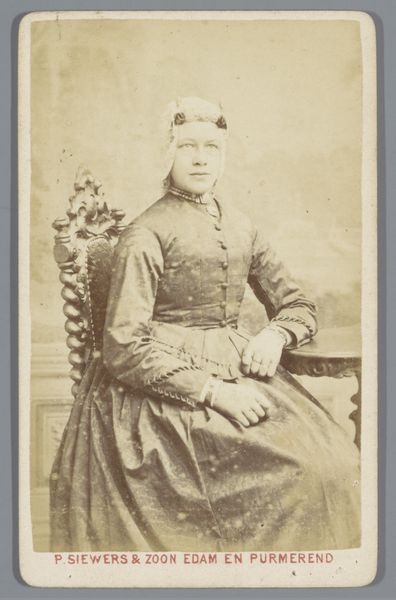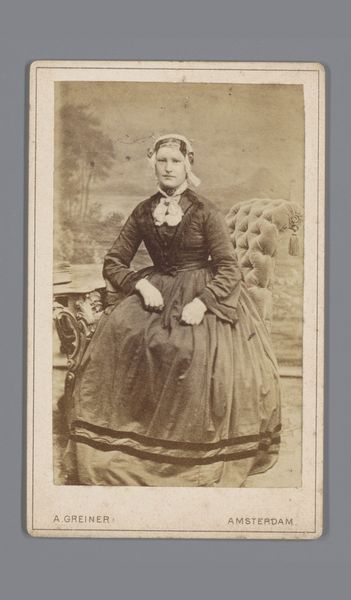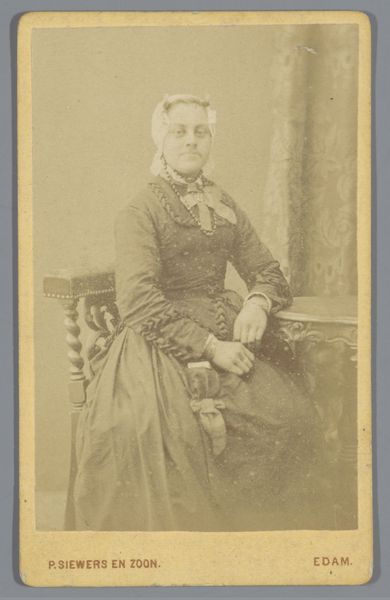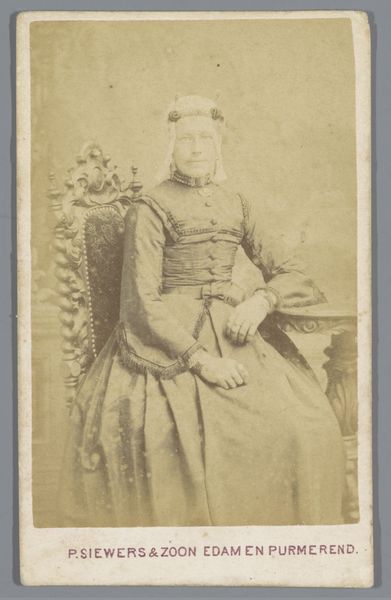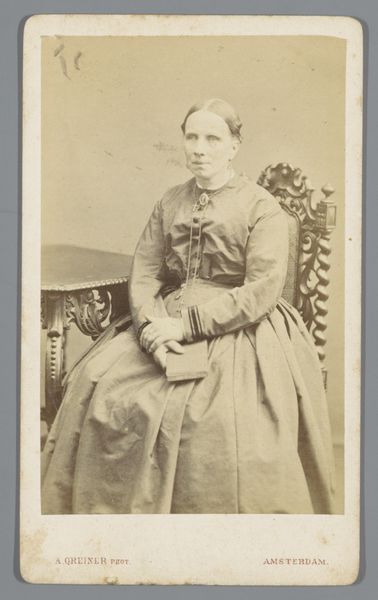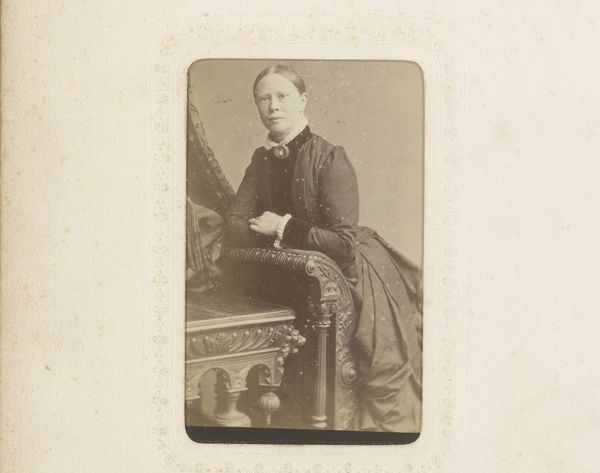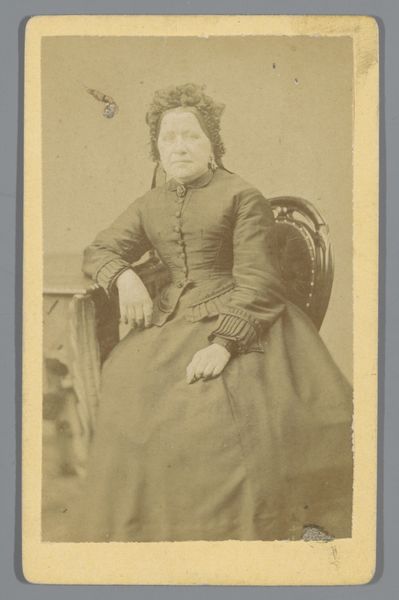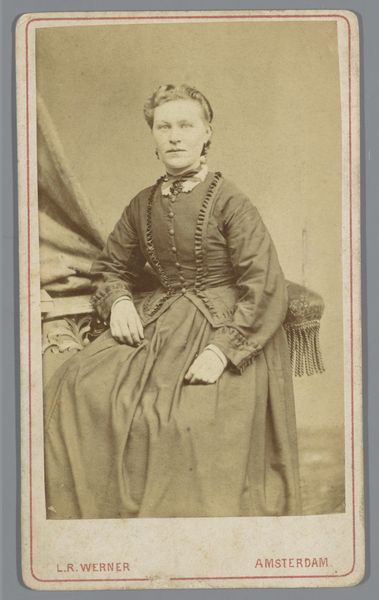
daguerreotype, photography
#
portrait
#
daguerreotype
#
photography
#
coloured pencil
Dimensions: length 99 mm, width 61 mm
Copyright: Rijks Museum: Open Domain
Editor: So, this is “Portret van Hillegond Bakker,” taken sometime between 1857 and 1898 by P. Siewers & Zoon, using daguerreotype photography. It feels so formal and reserved. How do you interpret this portrait? Curator: It is indeed formal. But let’s consider what a photographic portrait like this *represented* then, particularly for women. Think about the patriarchal structures that dictated their lives. Could this carefully constructed image, the sitter’s controlled expression, be a subtle form of resistance? A claiming of self in a world where women's images were often tools for male control? Editor: That's a really interesting way to look at it! I hadn’t considered the power dynamics at play. It’s a daguerreotype too, a very early form of photography, so wouldn’t the process have been incredibly long and involved? Curator: Exactly! Each pose meticulously planned, clothing and jewellery chosen deliberately. In what ways might the subject, Hillegond Bakker, be consciously performing a role, negotiating her identity through the limited means available to her in the 19th century? Notice her attire; the headdress especially seems laden with cultural meaning. How does her expression complicate, or perhaps subvert, the ideal of the docile, domestic woman? Editor: So it’s not just a picture, it's a statement of personhood, potentially. That gives the portrait so much more depth. Curator: Precisely. Examining such a seemingly simple portrait through a lens of gender, class, and power dynamics can reveal much more profound narratives about identity and self-representation in the 19th century. It’s a snapshot, yes, but also a carefully worded declaration.
Comments
No comments
Be the first to comment and join the conversation on the ultimate creative platform.
